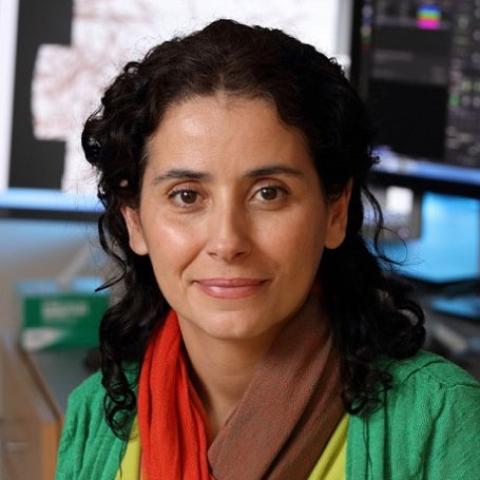
Eyleen Jorgelina O'Rourke
Member of the Robert M. Berne Cardiovascular Research Center
Office Address: 312 PLSB
Research Interests
Through evolutionary history the human genome was optimized to promote survival in environments where food is mostly scarce. These survivor-genomes clash with an environment where calorie-rich foods are readily available. Based on the premise that the genes networks that allow animals to endure starvation are under strong selective pressure and consequently conserved, we use a combination of cutting-edge functional genomics, biochemical, cell biology, genetic, and physiological approaches to identify and characterize the conserved gene networks that allow the animal model Caenorhabditis elegans to adapt to changes in food availability. Ultimately, our research would contribute to better understanding of how dysfunctional gene networks affect or cause obesity, diabetes, and cardiovascular disease, and accelerate aging.
Representative Publications
H. Zhang, J.T. Chang, B. Guo, M. Hansen, K. Jia, A.L. Kovács, C. Kumsta, L.R. Lapierre, R. Legouis, L. Lin, Q. Lu, A. Meléndez, E. J. O'Rourke, K. Sato, M. Sato, X. Wang, F. Wu. (2015). “Guidelines for monitoring autophagy in Caenorhabditis elegans”. Autophagy, 2;11(1):9-27.
Wählby, C., Lee-Conery, A., Bray, M., Kamentsky, L., Larkins-Ford, J., Sokolnicki, K., Veneskey, M., Michaels, K.*, Carpenter, A.E., and O’Rourke, E.J.*. (2014). “High and low throughput quantitative analysis of lipid metabolism in C. elegans”. Methods, 68:492-9 (* UVa Researchers).
O’Rourke, E.J. and Ruvkun, G. (2013). “MXL-3 and HLH-30 transcriptionally link lipolysis and autophagy to nutrient availability”. Nature Cell Biology. 15(6):668-76.
O’Rourke, E.J., Kuballa, P., Xavier, R., and Ruvkun, G. (2013). “Omega-Polyunsaturated Fatty Acids Increase Lifespan through the Activation of Autophagy,” Genes and Development, 27(4):429-40.
C. Wahlby, L. Kamentsky, Z. Hans Liu, T. Riklin-Raviv, A. Lee Conery, E. J. O’Rourke, K. L. Madden, O. Visvikis, V. Ljosa, J. E. Irazoqui, P. Golland, G. Ruvkun, F. M. Ausubel, and A. E. Carpenter. (2011). "An image analysis toolbox for high-throughput C. elegans assays.” Nature Methods, (7):714-6.
O’Rourke E. J., Soukas A.A., Carr, C.E., Ruvkun, G. (2009). “C. elegans major fats are stored in vesicles distinct from lysosome-related organelles.” Cell Metabolism, 10(5):430-5.
O’Rourke, E.J., Conery, A.L. and Moy, T.I. (2009). “Whole animal high-throughput screens: the C. elegans model.” Methods in Molecular Biology, 486:57-75.
Wang, M.C., O'Rourke, E.J., Ruvkun, G. (2008). “Fat Metabolism Links Germline Stem Cells and Longevity in C. elegans”. Science, 322 (5903):957-960.
Current Funding: Pathway to Independence Award from the National Institute of Diabetes and Digestive and Kidney Diseases (NIH)